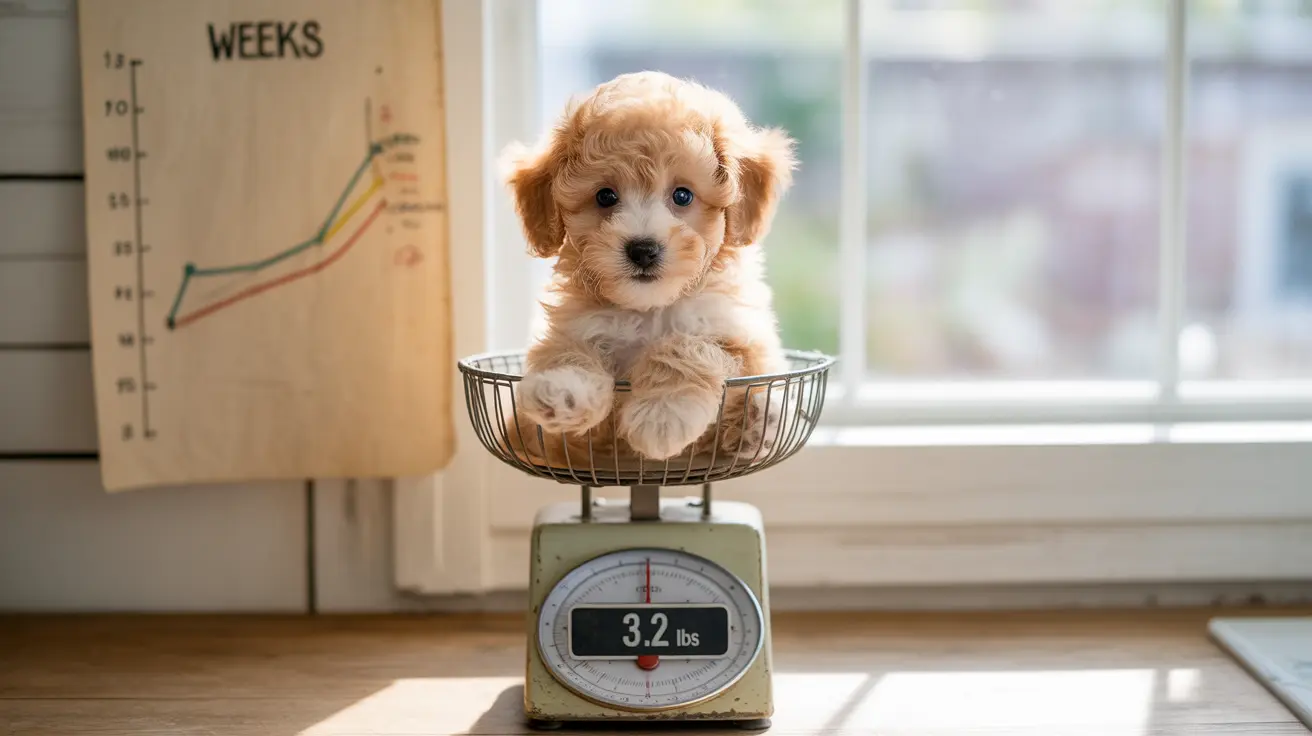Understanding your Toy Poodle's growth pattern is essential for ensuring healthy development. As the smallest variety of the Poodle breed, Toy Poodles follow a predictable growth trajectory, though individual puppies may develop at slightly different rates. This comprehensive guide will help you track your Toy Poodle's growth milestones and understand what to expect at each stage of development.
Whether you're a new Toy Poodle parent or considering adding one to your family, knowing the typical size and weight benchmarks can help you monitor your puppy's health and ensure they're growing appropriately. Let's explore the detailed growth stages and what you should expect as your Toy Poodle matures.
Understanding Toy Poodle Size Standards
According to breed standards, Toy Poodles should stand no taller than 10 inches at the shoulder when fully grown. Adult weight typically ranges from 4 to 6 pounds, though some healthy individuals may reach up to 12 pounds. These compact dimensions make them perfect companions for apartment living and those seeking a smaller pet.
Early Growth Stages (8-16 Weeks)
The first few months of a Toy Poodle's life see rapid growth and development. At 8 weeks, puppies typically weigh between 1.8 and 2.4 pounds and stand about 5.75 to 6 inches tall. By 16 weeks (4 months), expect your puppy to reach approximately 8 inches in height and weigh between 4 and 5.5 pounds.
Critical Development Period (4-6 Months)
Between 4 and 6 months, Toy Poodles experience significant growth. By 6 months, most puppies reach about 75% of their adult size, typically weighing 4.5 to 6.75 pounds and standing roughly 9 to 9.25 inches tall. This period requires careful monitoring of diet and exercise to support healthy development.
Final Growth Phase (6-12 Months)
Growth begins to slow after 6 months, with most Toy Poodles reaching their full height by 9 months. Growth plates typically close between 9-12 months, marking the end of significant height increases. By their first birthday, most Toy Poodles achieve their adult size, weighing 6-9 pounds and standing up to 10 inches tall.
Factors Affecting Growth and Development
Several key factors influence a Toy Poodle's growth rate and final size:
- Genetics and parentage
- Quality of nutrition
- Exercise levels
- Overall health status
- Environmental factors
Health Considerations During Growth
Monitoring your Toy Poodle's growth isn't just about tracking numbers—it's also about watching for potential health issues. Common concerns during the growth period include:
- Hypoglycemia risk in young puppies
- Dental development
- Joint health
- Growth plate protection
Monitoring Your Toy Poodle's Growth
Regular weight checks and height measurements are crucial for tracking your puppy's development. Use a small kitchen scale for weight measurements and a measuring tape for height. Keep a growth journal to track progress and share this information with your veterinarian during check-ups.
Frequently Asked Questions
How tall and heavy should my Toy Poodle be at different growth stages?
Toy Poodles follow a predictable growth pattern: 8 weeks (1.8-2.4 lbs, 5.75-6 inches), 16 weeks (4-5.5 lbs, 8 inches), 6 months (4.5-6.75 lbs, 9-9.25 inches), and adult size (6-9 lbs, up to 10 inches).
When does a Toy Poodle typically stop growing in height and weight?
Most Toy Poodles reach their full height by 9 months and complete their growth by 12 months. Growth plates typically close between 9-12 months of age.
What factors influence the growth and final size of a Toy Poodle?
Key factors include genetics, nutrition quality, exercise levels, overall health status, and proper veterinary care during development.
How can I use a Toy Poodle growth chart to monitor my puppy's development?
Use a growth chart as a reference guide, regularly weighing and measuring your puppy to track progress. Compare your puppy's measurements to breed standards while remembering that some variation is normal.
Are there health concerns linked to Toy Poodle growth that I should watch for?
Yes, watch for signs of hypoglycemia in young puppies, maintain proper dental care, and protect growing joints. Consult your veterinarian if you notice any significant deviations from normal growth patterns.
Remember that while growth charts provide valuable guidelines, each Toy Poodle is unique. Regular veterinary check-ups and careful monitoring will help ensure your puppy develops into a healthy adult dog.






